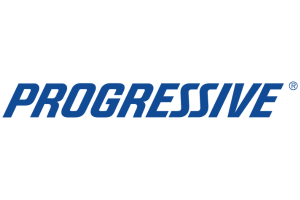What is Actuarial value?
Learn about the concept of actuarial value and its significance in insurance plans. This article explores how actuarial value affects coverage and cost-sharing, providing insights into understanding and comparing different healthcare options.
Read more Secured with SHA-256 Encryption






Find the Lowest Car Insurance Rates Today
Quote’s drivers have found rates as low as $42/month in the last few days!




Table of Contents
Table of Contents


Insurance Content Managing Editor
Daniel S. Young began his professional career as chief editor of The Chanticleer, a Jacksonville State University newspaper. He also contributed to The Anniston Star, a local newspaper in Alabama. Daniel holds a BA in Communication and is pursuing an MA in Journalism & Media Studies at the University of Alabama. With a strong desire to help others protect their investments, Daniel has writt...
Daniel S. Young


Licensed Insurance Producer
Dani Best has been a licensed insurance producer for nearly 10 years. Dani began her insurance career in a sales role with State Farm in 2014. During her time in sales, she graduated with her Bachelors in Psychology from Capella University and is currently earning her Masters in Marriage and Family Therapy. Since 2014, Dani has held and maintains licenses in Life, Disability, Property, and Casualt...
Dani Best
Updated January 2025
Actuarial value is a concept that plays a crucial role in health insurance and can greatly impact the costs and choices available to consumers. Understanding what actuarial value means, how it is calculated, and its relationship with out-of-pocket costs is essential for making informed decisions when it comes to selecting the right insurance plan. In this article, we will delve into the depths of actuarial value, exploring its definition, importance, factors that influence it, and its implications in health insurance. So let’s begin by understanding the concept of actuarial value in more detail.
Understanding the Concept of Actuarial Value
Actuarial value is a metric used to measure the percentage of healthcare costs covered by an insurance plan. It serves as an important indicator of the financial protection a policy provides to its policyholders. Essentially, actuarial value helps individuals assess the amount they can expect their insurance plan to pay for covered medical services.
Definition of Actuarial Value
Actuarial value is defined as the average percentage of covered medical expenses that an insurance plan pays. For instance, if a plan has an actuarial value of 80%, it means that, on average, the plan will cover 80% of the costs of covered services, while the remaining 20% would be the policyholder’s responsibility through deductibles, copayments, or coinsurance.
Importance of Actuarial Value
The actuarial value of a plan is a vital component in determining the affordability and comprehensiveness of health insurance coverage. It enables individuals to compare the level of coverage offered by different plans and make well-informed decisions based on their specific healthcare needs and financial considerations.
Now that we have a clear understanding of the concept of actuarial value, let’s explore the factors that influence it.
One of the key factors that influence actuarial value is the cost-sharing structure of the insurance plan. Different plans may have varying levels of deductibles, copayments, and coinsurance. These out-of-pocket expenses can significantly impact the actuarial value of a plan. For example, a plan with a high deductible and high coinsurance may have a lower actuarial value compared to a plan with a lower deductible and lower coinsurance.
Another factor that affects actuarial value is the coverage of essential health benefits. The Affordable Care Act requires insurance plans to cover a set of essential health benefits, including preventive care, prescription drugs, and maternity care. The extent to which these benefits are covered by the plan can influence the actuarial value. Plans that cover a wider range of essential health benefits may have a higher actuarial value compared to those that offer limited coverage.
Furthermore, the network of healthcare providers included in the plan can impact actuarial value. Insurance plans with a larger network of providers may offer more options for policyholders to seek medical care at lower costs, resulting in a higher actuarial value. On the other hand, plans with a limited network of providers may have a lower actuarial value due to higher out-of-network costs.
Additionally, the geographic location of the policyholder can influence actuarial value. Healthcare costs and provider reimbursement rates can vary significantly across different regions. Therefore, the actuarial value of a plan may differ based on where the policyholder resides.
Lastly, the age and health status of the policyholder can also play a role in determining actuarial value. Plans that cater to older individuals or individuals with pre-existing conditions may have a higher actuarial value to account for potentially higher healthcare costs.
Free Health Insurance Comparison
Compare Quotes From Top Companies and Save
Secured with SHA-256 Encryption
Factors Influencing Actuarial Value
Several factors come into play when calculating actuarial value. Let’s take a closer look at three key factors – health care costs, plan design, and population risk.
Health Care Costs
The overall cost of healthcare services greatly affects the actuarial value of an insurance plan. Higher healthcare costs generally result in higher premiums and, consequently, a lower actuarial value. Similarly, plans with lower premiums may have higher out-of-pocket costs, resulting in a lower actuarial value.
Healthcare costs can vary significantly depending on factors such as the cost of medical procedures, prescription drugs, and hospital stays. For example, the rising cost of prescription drugs can have a substantial impact on the actuarial value of a plan. Insurance companies take into account the average cost of medications for the population covered by the plan when determining its actuarial value.
Furthermore, advancements in medical technology and treatments can also influence healthcare costs and, subsequently, actuarial value. New and innovative treatments may be more expensive, leading to higher premiums and lower actuarial values for plans that cover them.
Plan Design
The specific design of an insurance plan, such as its deductibles, copayments, and coinsurance, significantly impacts its actuarial value. Plans with higher deductibles or copayments tend to have lower actuarial values, as the policyholders would bear a larger share of the healthcare costs.
Insurance companies carefully consider the balance between premiums and out-of-pocket costs when designing a plan. They aim to strike a balance that provides adequate coverage while keeping premiums affordable for policyholders. Actuaries analyze different plan design options to determine the most appropriate combination of deductibles, copayments, and coinsurance that align with the desired actuarial value.
Moreover, the inclusion of additional benefits in a plan can also impact its actuarial value. Plans that offer comprehensive coverage, including services such as mental health support, preventive care, and maternity care, may have higher actuarial values compared to plans that provide limited coverage.
Population Risk
The risk profile of the population covered by an insurance plan also affects the actuarial value. Plans covering individuals with higher health risks or chronic conditions may have higher actuarial values to accommodate the expected higher utilization of healthcare services.
Actuaries assess the health status and medical history of the population when determining the actuarial value of a plan. They consider factors such as age, pre-existing conditions, and lifestyle habits that may impact the utilization of healthcare services. Plans covering populations with a higher prevalence of chronic diseases or older individuals may have higher actuarial values to account for the increased healthcare needs.
Additionally, demographic factors such as location and socioeconomic status can also influence population risk and, consequently, actuarial value. For example, plans covering individuals in areas with limited access to healthcare facilities may have higher actuarial values to accommodate the potential need for out-of-network services.
Now that we understand the factors influencing actuarial value, let’s take a closer look at how it is calculated.
Calculating Actuarial Value
Actuarial value calculation involves a systematic approach that takes into account various plan features. There are several ways to determine actuarial value, but one common method is using an actuarial value calculator.
Actuarial Value Calculator
An actuarial value calculator is a tool that helps insurance companies and policymakers compute actuarial values accurately. It considers plan-specific details like deductibles, copayments, coinsurance, and maximum out-of-pocket limits to generate an actuarial value estimation.
Actuarial value calculators play a crucial role in the insurance industry as they provide a standardized and objective way to assess the value of health insurance plans. These calculators take into account various factors that influence the cost-sharing between the insurer and the policyholder, ensuring a fair and transparent evaluation of plan benefits.
Using an actuarial value calculator involves inputting specific information about the health insurance plan, such as the deductible amount, copayment percentages, and maximum out-of-pocket limits. The calculator then applies a formula to determine the actuarial value, which represents the percentage of total average costs that the plan is expected to cover.
Formula and Calculation Process
The formula for calculating actuarial value varies depending on the type of plan and the specific guidelines set forth by regulatory authorities. Generally, the calculation involves determining the plan’s share of costs, considering both the insurer’s portion and the policyholder’s share through deductibles, copayments, and coinsurance.
Actuarial value calculations take into account the expected utilization of healthcare services by policyholders and the corresponding costs. The formula considers the distribution of healthcare expenses across different categories, such as prescription drugs, hospital stays, and preventive care.
Furthermore, actuarial value calculations may also incorporate factors like network restrictions, formulary limitations, and other plan-specific details that can affect the overall value of the insurance coverage.
With a better understanding of how actuarial value is calculated, let’s explore its significance in the realm of health insurance.
Actuarial value serves as a valuable tool for consumers in comparing different health insurance plans. It provides a standardized metric that allows individuals to assess the level of coverage and cost-sharing associated with each plan. By understanding the actuarial value, consumers can make informed decisions about their healthcare needs and financial considerations.
Additionally, actuarial value plays a crucial role in the implementation of the Affordable Care Act (ACA). The ACA requires health insurance plans offered in the individual and small group markets to meet certain actuarial value requirements. These requirements ensure that consumers have access to plans that provide a minimum level of coverage and protection against high healthcare costs.
Actuarial value calculations also contribute to the development of insurance pricing strategies. Insurers use actuarial value as a basis for setting premiums, as it helps them estimate the expected costs associated with providing coverage. This information allows insurers to offer competitive pricing while maintaining the financial stability necessary to fulfill their obligations to policyholders.
Actuarial Value in Health Insurance
Actuarial value plays a crucial role in both determining premiums and influencing consumer choices when it comes to health insurance plans.
When it comes to health insurance, actuarial value is a term that refers to the percentage of total average costs for covered benefits that a plan will cover. In other words, it represents the portion of healthcare expenses that an insurance plan will pay for on behalf of the policyholder. Actuarial value is a key factor in determining the level of coverage and the cost-sharing responsibilities of the policyholder.
Actuarial value serves as a valuable tool for consumers to compare and evaluate different insurance options. It allows individuals to assess the level of protection an insurance plan offers against potential healthcare expenses. Depending on their specific needs and preferences, individuals may choose a higher actuarial value plan for more comprehensive coverage or opt for a lower actuarial value plan for lower premium costs and are willing to accept higher out-of-pocket expenses.
Actuarial value also directly affects the premium amount individuals need to pay. Plans with higher actuarial values typically have higher premiums but provide more comprehensive coverage, reducing the out-of-pocket costs for policyholders. This means that individuals who anticipate needing frequent medical services or have ongoing health conditions may find it beneficial to choose a plan with a higher actuarial value, as it will help to minimize their out-of-pocket expenses.
On the other hand, lower actuarial value plans generally have lower premiums but may come with higher deductibles and more significant cost-sharing responsibilities. These plans are often preferred by individuals who are generally healthy and do not anticipate needing extensive medical services in the near future. By choosing a plan with a lower actuarial value, they can save on monthly premium costs while accepting the risk of higher out-of-pocket expenses if they do require medical care.
It is important to note that actuarial value is not the only factor to consider when choosing a health insurance plan. Other factors such as network coverage, prescription drug coverage, and provider options should also be taken into account. However, actuarial value provides a useful benchmark for individuals to evaluate the overall value and cost-sharing structure of different plans.
Free Health Insurance Comparison
Compare Quotes From Top Companies and Save
Secured with SHA-256 Encryption
Actuarial Value vs. Out-of-Pocket Costs
While actuarial value and out-of-pocket costs are related concepts, it’s important to understand the fundamental difference between the two.
Understanding the Difference
Actuarial value represents the overall percentage of medical costs covered by an insurance plan, including both the insurance company’s share and the policyholder’s cost-sharing responsibilities. Out-of-pocket costs, on the other hand, refer specifically to the expenses that individuals must pay directly, such as deductibles, copayments, or coinsurance.
How They Affect Each Other
Actuarial value and out-of-pocket costs have an inverse relationship. As actuarial value increases, the out-of-pocket costs decrease and vice versa. This relationship allows individuals to find a balance between the premium costs they are willing to pay and the potential healthcare expenses they can afford to cover out-of-pocket.
Actuarial value is a crucial factor to consider when selecting a health insurance plan. Understanding its definition, calculation process, and implications not only helps individuals make informed decisions but also allows them to assess the level of financial protection offered by different plans. By comparing actuarial values alongside out-of-pocket costs, individuals can select the most suitable insurance plan based on their specific healthcare needs and budget constraints.
Frequently Asked Questions
What is actuarial value?
Actuarial value is a measure used in the insurance industry to determine the percentage of total average costs for covered benefits that a health insurance plan will cover.
How is actuarial value calculated?
Actuarial value is calculated by analyzing the overall costs of a health insurance plan, including deductibles, copayments, and coinsurance, and comparing them to the total costs of covered benefits.
What does an actuarial value of 70% mean?
An actuarial value of 70% means that, on average, the insurance plan will cover 70% of the total costs of covered benefits, while the remaining 30% will be paid by the insured through deductibles, copayments, and coinsurance.
How does actuarial value affect insurance premiums?
Higher actuarial values generally result in higher insurance premiums because plans with higher actuarial values offer more comprehensive coverage, reducing the out-of-pocket costs for policyholders.
What factors can influence the actuarial value of a health insurance plan?
The actuarial value of a health insurance plan can be influenced by various factors, including the type of plan (e.g., bronze, silver, gold, platinum), the specific benefits covered, the cost-sharing structure, and the demographics of the insured population.
Can actuarial value vary within the same type of health insurance plan?
Yes, actuarial value can vary within the same type of health insurance plan. Different insurance companies may offer plans with varying actuarial values to cater to different consumer needs and preferences.
Get a FREE Quote in Minutes
Insurance rates change constantly — we help you stay ahead by making it easy to compare top options and save.


